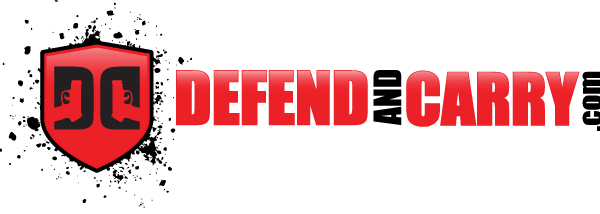A holster may well be the most important accessory one buys for a firearm outside of a cleaning kit, so it’s beneficial to know the types of holsters that are available. Each serves a different purpose and has unique benefits and limitations.
Types Of Holsters Break Into Several Categories

There are a variety of types of holsters out there for carrying one’s firearm, and they break into several categories. Mostly, holster types are defined by construction and mounting location.
Paddle or Pancake Holsters
There are two primary methods of making a holster, called “paddle” and “pancake.”
A paddle holster is made by attaching a shell to a backing material. Typically, the shell is made of a slick but stiff plastic; proprietary blends such as Kydex and Boltaron are common. How the shell is constructed and mounted to the backing – which is often somewhat paddle-shaped, hence the name – varies by manufacturer.
Pancake holsters are (more or less) two pieces of material joined together. There’s a cavity in the middle and that’s where the gun goes. Leather is a very common material, with high-end leather gun holsters available in exotic hides. Pancake holsters range from a non-descript quasi-ovals to precision crafted for specific firearms.
From the Hip Holster
Another defining criteria of the types of holsters is where it goes on the body, the most common being the hip holster.
The hip holster has been the default since the pistol was invented, because it works. The two primary types of hip (and/or waist area; not all are carried directly on the hip) holster are inside or outside the waistband, commonly denoted as IWB or OWB. They are the easiest to conceal – a roomy shirt does it – and the easiest to reach in case you need to. Drawing while seated, though, is problematic.
While most are situated with the gun on the wearer’s dominant hand, they can be situated for cross-draw. This can pose concealment difficulties, as cross-drawing often requires the grip be closer to the belly button.
Hip holsters require gun belts, which are stiffer and thicker than normal belts due to the greater horizontal and vertical tension needed to hold up a holster.
Shoulder
One of the other common types of holsters are shoulder holsters. Shoulder holsters can be either horizontal, for most firearms, or vertical, for longer guns such as full-frame/large caliber revolvers.
Access is easy, but reholstering can be a slight hassle, and concealment requires a jacket.
The sling holster is related, though secured via a shoulder harness and strap across the chest, putting the grip around the sternum. Access and reholstering is very quick, but concealment is essentially nonexistent. These are mostly employed by combat personnel.
Leg or Ankle Holsters
Other common holsters include leg and ankle holsters. Leg holsters, naturally, strap a gun to the thigh. They are accessible from nearly any position, but can’t be concealed without a full-length jacket…that’s closed.
Ankle holsters, however, are perfectly concealable unless you wear shorts. Running is pretty much out of the question and if you need your gun in a hurry, forget it. Only small guns can be carried this way, so most ankle holsters are used for backups rather than primary sidearms.
Rounding out the rest
Some of the other common types of holsters are pocket holsters and small-of-the-back holsters. Pocket holsters are the most easily concealed, but only work for the smallest of guns, like a derringer. If you wear especially tight jeans, you may have to use a zip gun.
Small-of-the-back holsters are likewise easily concealable, but hard to access while sitting. Since most IWB and OWB holsters require a belt as an anchor, they can be worn at the hip or the small of the back or moved at the wearer’s convenience.
There may be a few other types, but the above mentioned holster varieties are almost all that you’ll encounter or likely need to consider. You’ll need to find the right one for you, so try a few out before buying.
 |
 |
